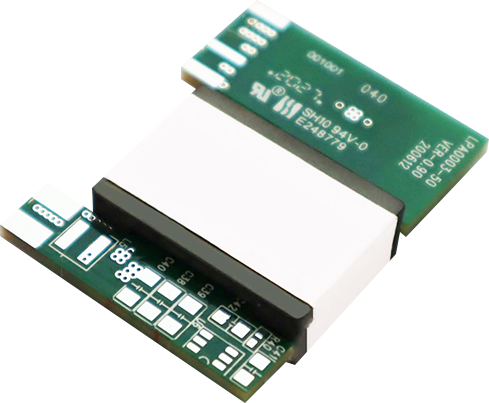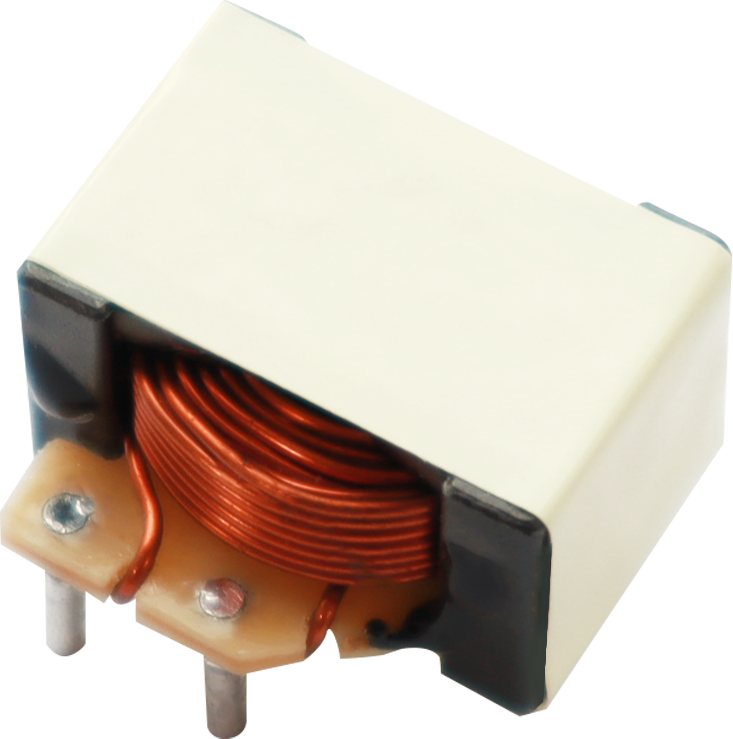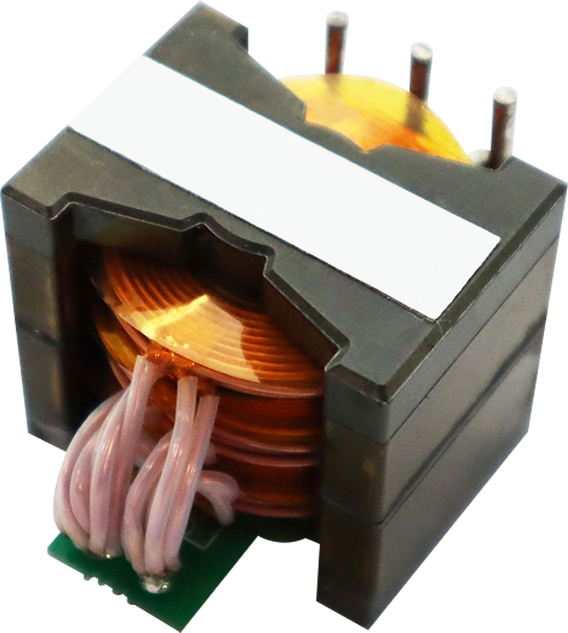

News
Seven key parameters affecting the efficiency of planar transformers
一、Core material
The core material is the primary factor affecting transformer efficiency. The magnetic permeability and loss characteristics of different core materials directly determine the efficiency of the transformer. Common core materials include silicon steel sheets, amorphous materials and ferrites. The former is suitable for high-frequency applications, while the latter performs well in low-frequency applications. Current technology can reduce the size of the transformer by increasing the switching frequency, but increasing the frequency will cause the transformer to produce higher iron losses (including hysteresis losses and eddy current losses) and copper losses (skin effect), resulting in a decrease in its conversion efficiency. In high-frequency applications, planar transformers can improve these losses and achieve a conversion efficiency of more than 90%. Choosing the right core material can not only reduce losses but also improve the efficiency of the magnetic circuit, thereby greatly improving the overall efficiency of the transformer. There are two main parameters that affect the efficiency of the core, the hysteresis curve and the leakage effect (FRINGING EFFECT) The hysteresis curve refers to the curve that shows the relationship between magnetic induction intensity (B) and magnetic field intensity (H). The relationship between the two is nonlinear. When the magnetic field strength increases, the magnetic induction intensity will rise along the curve to reach point Bs. At this time, even if the magnetic field strength continues to increase, the magnetic induction intensity tends to increase slowly. This is called magnetic saturation. Transformer saturation will cause the inductance to decrease, causing large current to flow through the transformer coil and damage the switching elements. Therefore, transformer saturation needs to be avoided during design. The FRINGING EFFECT refers to the effect that occurs when the magnetic flux bends near the air gap of the magnetic core. The distance this flux bends is essentially proportional to the length of the air gap. In order to reduce the leakage magnetic effect, the relative position and size of the air gap and the copper wire become important conditions when selecting the iron core.
二、Winding structure
The winding structure has an important influence on the electrical and thermal performance of the transformer. Reasonable winding arrangement can reduce leakage inductance and inductance, thereby improving the efficiency of the transformer. Common winding materials are copper wire and PCB. Although multilayer PCB is more expensive, its coupling and heat dissipation performance are better than copper wire. Therefore, optimizing winding structure and material selection is one of the keys to improving transformer efficiency. Existing technologies also include changing PCB to copper foil or extended design of flat copper wire, which can effectively reduce costs. However, when it comes to mass production, PCB is still the production process with the most consistent mass production.
三、Winding resistance
Winding resistance is one of the main sources of energy loss in the winding. Reducing the winding resistance can effectively improve the efficiency of the transformer. This can be achieved by using thicker wire, optimizing winding layout and selecting low resistance materials. Additionally, reducing the number of joints and solder joints in the windings also helps reduce resistive losses, further improving the efficiency of the transformer. Existing material technologies also include adding other materials into the conductor (such as modified copper) to further improve conductivity. However, these materials are relatively expensive and are only used in a few applications.
四、Cooling by design
The transformer generates a lot of heat during operation. Good heat dissipation design helps maintain the normal operating temperature of the transformer, thereby improving its efficiency. Common heat dissipation methods include heat sinks, forced air cooling, and liquid cooling. Selecting the proper heat dissipation design can avoid damage caused by overheating and extend the service life of the transformer.
五、Leakage Inductance
Leakage inductance is an important issue in transformer design, which will lead to energy loss and reduced efficiency. Reducing leakage inductance can be achieved by improving the winding structure, reducing the distance between windings and selecting appropriate core materials. Especially in high-frequency applications, reasonable design of the distributed capacitance of the winding is also an important measure to reduce leakage inductance.
六、No-load loss
No-load loss is the energy loss generated by the transformer when there is no load, mainly including core loss and winding loss. Reducing no-load losses is an important way to improve transformer efficiency. Selecting core materials with low hysteresis loss and eddy current loss and optimizing winding design to reduce resistance loss are both effective ways to reduce no-load loss. In addition, proper heat treatment and surface treatment techniques can also reduce material loss.
七、Line capacitance
Line capacitance refers to the capacitive effect between windings, which affects the high-frequency characteristics and efficiency of the transformer. When operating at high frequencies, line capacitance can lead to energy losses and reduced efficiency. Reducing line capacitance can be achieved by improving the winding structure, increasing the insulation between windings and selecting appropriate materials. Effectively controlling the line capacitance can improve the high-frequency efficiency and stability of the transformer.
In summary, the seven key parameters that affect the efficiency of the flat transformer include core material, winding structure, winding resistance, heat dissipation design, leakage inductance, no-load loss and line capacitance. Precise control of these parameters allows the design of efficient and reliable planar transformers that meet the demands of modern power applications. With the continuous advancement of technology, the design of flat-panel transformers in the future will be more precise and efficient, providing stable power guarantee for various application scenarios.


